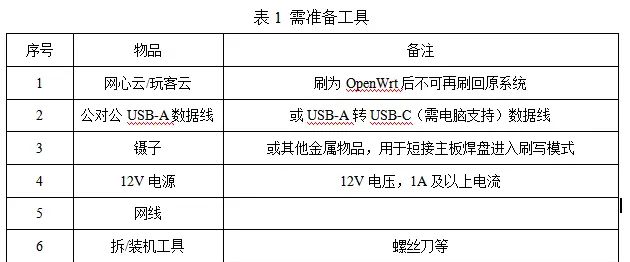类型转换是Python编程中的一个基础操作,但它的行为常常让人困惑。特别是当涉及到隐式转换、显式转换和类型检查时,转换的结果可能与你期望的不同。我曾经由于不理解类型转换的规则而写出了一个在特定输入下行为异常的函数。
类型转换的基本概念
第一,让我们回顾类型转换的基本概念:
# 基本的类型转换
number = 42
string = str(number)
float_num = float(number)
bool_val = bool(number)
print(f"数字: {number}, 类型: {type(number)}")
print(f"字符串: {string}, 类型: {type(string)}")
print(f"浮点数: {float_num}, 类型: {type(float_num)}")
print(f"布尔值: {bool_val}, 类型: {type(bool_val)}")
类型转换的陷阱
1. 隐式类型转换
# 隐式类型转换的陷阱
def test_implicit_conversion():
# 数字和字符串的隐式转换
result1 = "Hello" + str(42) # 正确
print(f"字符串拼接: {result1}")
# 错误:不能直接拼接
try:
result2 = "Hello" + 42 # 这会报错
except TypeError as e:
print(f"错误: {e}")
# 数字运算中的隐式转换
result3 = 3.14 + 1 # int自动转换为float
print(f"浮点运算: {result3}, 类型: {type(result3)}")
# 布尔值的隐式转换
result4 = True + 1 # True转换为1
print(f"布尔运算: {result4}, 类型: {type(result4)}")
# 测试
test_implicit_conversion()
2. 显式类型转换的陷阱
# 显式类型转换的陷阱
def test_explicit_conversion():
# 字符串转数字
try:
num1 = int("42")
print(f"int('42') = {num1}")
except ValueError as e:
print(f"错误: {e}")
try:
num2 = int("42.5") # 这会报错
except ValueError as e:
print(f"错误: {e}")
# 浮点数转整数
num3 = int(3.14)
print(f"int(3.14) = {num3}") # 截断,不是四舍五入
# 字符串转布尔值
bool1 = bool("True")
bool2 = bool("False")
bool3 = bool("")
print(f"bool('True') = {bool1}")
print(f"bool('False') = {bool2}")
print(f"bool('') = {bool3}")
# 测试
test_explicit_conversion()
3. 类型检查的陷阱
# 类型检查的陷阱
def test_type_checking():
# 使用type()检查类型
value1 = 42
print(f"type(42) == int: {type(value1) == int}")
# 使用isinstance()检查类型
print(f"isinstance(42, int): {isinstance(value1, int)}")
print(f"isinstance(42, (int, float)): {isinstance(value1, (int, float))}")
# 子类检查
class MyInt(int):
pass
my_int = MyInt(42)
print(f"type(my_int) == int: {type(my_int) == int}") # False
print(f"isinstance(my_int, int): {isinstance(my_int, int)}") # True
# 鸭子类型检查
def is_iterable(obj):
try:
iter(obj)
return True
except TypeError:
return False
print(f"is_iterable([1,2,3]): {is_iterable([1,2,3])}")
print(f"is_iterable('hello'): {is_iterable('hello')}")
print(f"is_iterable(42): {is_iterable(42)}")
# 测试
test_type_checking()
实际开发中的陷阱
1. 数据验证中的类型转换
# 数据验证中的类型转换问题
def validate_age(age_input):
# 错误:直接转换可能失败
try:
age = int(age_input)
if age < 0 or age > 150:
return False, "年龄必须在0-150之间"
return True, age
except ValueError:
return False, "年龄必须是数字"
def validate_age_better(age_input):
# 正确:先检查再转换
if not isinstance(age_input, (int, str)):
return False, "年龄必须是数字或字符串"
if isinstance(age_input, str):
if not age_input.isdigit():
return False, "年龄字符串必须只包含数字"
age = int(age_input)
else:
age = age_input
if age < 0 or age > 150:
return False, "年龄必须在0-150之间"
return True, age
# 测试
test_cases = [25, "30", "abc", -5, 200, 3.14]
for case in test_cases:
result1 = validate_age(case)
result2 = validate_age_better(case)
print(f"输入: {case}")
print(f" 简单验证: {result1}")
print(f" 改善验证: {result2}")
print()
2. 配置文件解析中的类型转换
# 配置文件解析中的类型转换问题
import json
def parse_config_bad(config_data):
# 错误:直接转换可能失败
try:
config = json.loads(config_data)
# 假设配置中有数字字段
config['timeout'] = int(config['timeout'])
config['retries'] = int(config['retries'])
config['debug'] = bool(config['debug'])
return config
except (ValueError, KeyError) as e:
return {"error": str(e)}
def parse_config_good(config_data):
# 正确:安全的类型转换
try:
config = json.loads(config_data)
# 安全的类型转换
if 'timeout' in config:
try:
config['timeout'] = int(config['timeout'])
except (ValueError, TypeError):
config['timeout'] = 30 # 默认值
if 'retries' in config:
try:
config['retries'] = int(config['retries'])
except (ValueError, TypeError):
config['retries'] = 3 # 默认值
if 'debug' in config:
if isinstance(config['debug'], str):
config['debug'] = config['debug'].lower() in ['true', '1', 'yes']
else:
config['debug'] = bool(config['debug'])
return config
except json.JSONDecodeError as e:
return {"error": f"JSON解析错误: {e}"}
# 测试
config_data1 = '{"timeout": "30", "retries": "3", "debug": "true"}'
config_data2 = '{"timeout": "abc", "retries": "3", "debug": "true"}'
config_data3 = '{"timeout": 30, "retries": 3, "debug": true}'
for i, data in enumerate([config_data1, config_data2, config_data3], 1):
print(f"配置数据{i}:")
result1 = parse_config_bad(data)
result2 = parse_config_good(data)
print(f" 简单解析: {result1}")
print(f" 安全解析: {result2}")
print()
3. 数据库操作中的类型转换
# 数据库操作中的类型转换问题
class DatabaseManager:
def __init__(self):
self.data = {}
def insert_bad(self, table, record):
# 错误:直接转换可能失败
try:
# 模拟数据库插入
record['id'] = int(record['id'])
record['age'] = int(record['age'])
record['active'] = bool(record['active'])
self.data[table] = record
return True
except (ValueError, KeyError) as e:
return False
def insert_good(self, table, record):
# 正确:安全的类型转换
try:
processed_record = {}
# 安全转换ID
if 'id' in record:
try:
processed_record['id'] = int(record['id'])
except (ValueError, TypeError):
return False, "ID必须是数字"
# 安全转换年龄
if 'age' in record:
try:
age = int(record['age'])
if age < 0 or age > 150:
return False, "年龄必须在0-150之间"
processed_record['age'] = age
except (ValueError, TypeError):
return False, "年龄必须是数字"
# 安全转换布尔值
if 'active' in record:
if isinstance(record['active'], str):
processed_record['active'] = record['active'].lower() in ['true', '1', 'yes']
else:
processed_record['active'] = bool(record['active'])
# 复制其他字段
for key, value in record.items():
if key not in processed_record:
processed_record[key] = value
self.data[table] = processed_record
return True, "插入成功"
except Exception as e:
return False, f"插入失败: {e}"
# 测试
db = DatabaseManager()
test_records = [
{"id": "1", "age": "25", "active": "true", "name": "Alice"},
{"id": "abc", "age": "25", "active": "true", "name": "Bob"},
{"id": "2", "age": "200", "active": "true", "name": "Charlie"},
{"id": "3", "age": "30", "active": "false", "name": "David"}
]
for i, record in enumerate(test_records, 1):
print(f"记录{i}: {record}")
result1 = db.insert_bad(f"table{i}", record.copy())
result2 = db.insert_good(f"table{i}_good", record.copy())
print(f" 简单插入: {result1}")
print(f" 安全插入: {result2}")
print()
正确的解决方案
1. 使用类型检查函数
# 使用类型检查函数
def safe_int(value, default=None):
"""安全转换为整数"""
try:
return int(value)
except (ValueError, TypeError):
return default
def safe_float(value, default=None):
"""安全转换为浮点数"""
try:
return float(value)
except (ValueError, TypeError):
return default
def safe_bool(value, default=None):
"""安全转换为布尔值"""
if isinstance(value, bool):
return value
elif isinstance(value, str):
return value.lower() in ['true', '1', 'yes', 'on']
elif isinstance(value, (int, float)):
return bool(value)
else:
return default
# 测试
test_values = [42, "42", "42.5", "abc", True, "true", "false", None]
for value in test_values:
print(f"值: {value}")
print(f" safe_int: {safe_int(value)}")
print(f" safe_float: {safe_float(value)}")
print(f" safe_bool: {safe_bool(value)}")
print()
2. 使用类型转换装饰器
# 使用类型转换装饰器
def type_converter(*types):
"""类型转换装饰器"""
def decorator(func):
def wrapper(*args, **kwargs):
# 转换位置参数
converted_args = []
for i, arg in enumerate(args):
if i < len(types):
converted_args.append(types[i](arg))
else:
converted_args.append(arg)
# 转换关键字参数
converted_kwargs = {}
for key, value in kwargs.items():
converted_kwargs[key] = value
return func(*converted_args, **converted_kwargs)
return wrapper
return decorator
@type_converter(int, float, bool)
def calculate(a, b, c):
"""计算函数"""
return a + b + (1 if c else 0)
# 测试
result1 = calculate("10", "20.5", "true")
result2 = calculate(10, 20.5, True)
print(f"装饰器转换: {result1}")
print(f"直接调用: {result2}")
3. 使用类型提示和验证
# 使用类型提示和验证
from typing import Union, Optional
def validate_and_convert(value: Union[str, int, float],
target_type: type,
default: Optional[Union[str, int, float]] = None) -> Union[str, int, float]:
"""验证并转换类型"""
if isinstance(value, target_type):
return value
try:
if target_type == int:
return int(value)
elif target_type == float:
return float(value)
elif target_type == str:
return str(value)
elif target_type == bool:
if isinstance(value, str):
return value.lower() in ['true', '1', 'yes']
return bool(value)
else:
return default
except (ValueError, TypeError):
return default
# 测试
test_cases = [
("42", int),
("3.14", float),
(42, str),
("true", bool),
("abc", int),
(None, int)
]
for value, target_type in test_cases:
result = validate_and_convert(value, target_type, "默认值")
print(f"转换 {value} 到 {target_type.__name__}: {result}")
实际应用示例
1. 类型安全的计算器
class TypeSafeCalculator:
def __init__(self):
self.history = []
def safe_add(self, a, b):
"""安全的加法"""
try:
a_num = self._safe_convert_to_number(a)
b_num = self._safe_convert_to_number(b)
if a_num is None or b_num is None:
return None, "参数必须是数字"
result = a_num + b_num
self.history.append(f"{a} + {b} = {result}")
return result, "成功"
except Exception as e:
return None, f"计算错误: {e}"
def safe_multiply(self, a, b):
"""安全的乘法"""
try:
a_num = self._safe_convert_to_number(a)
b_num = self._safe_convert_to_number(b)
if a_num is None or b_num is None:
return None, "参数必须是数字"
result = a_num * b_num
self.history.append(f"{a} * {b} = {result}")
return result, "成功"
except Exception as e:
return None, f"计算错误: {e}"
def _safe_convert_to_number(self, value):
"""安全转换为数字"""
if isinstance(value, (int, float)):
return value
elif isinstance(value, str):
try:
if '.' in value:
return float(value)
else:
return int(value)
except ValueError:
return None
else:
return None
def get_history(self):
return self.history
# 测试
calculator = TypeSafeCalculator()
test_cases = [
(10, 20),
("10", "20"),
("10.5", "20.5"),
("abc", 20),
(10, "def")
]
for a, b in test_cases:
result1, msg1 = calculator.safe_add(a, b)
result2, msg2 = calculator.safe_multiply(a, b)
print(f"加法: {a} + {b} = {result1} ({msg1})")
print(f"乘法: {a} * {b} = {result2} ({msg2})")
print()
print(f"计算历史: {calculator.get_history()}")
2. 类型安全的数据处理器
class TypeSafeDataProcessor:
def __init__(self):
self.processed_data = []
def process_record(self, record):
"""处理单条记录"""
try:
processed = {}
# 处理ID字段
if 'id' in record:
processed['id'] = self._safe_int(record['id'])
if processed['id'] is None:
return None, "ID必须是数字"
# 处理年龄字段
if 'age' in record:
processed['age'] = self._safe_int(record['age'])
if processed['age'] is None:
return None, "年龄必须是数字"
if processed['age'] < 0 or processed['age'] > 150:
return None, "年龄必须在0-150之间"
# 处理姓名字段
if 'name' in record:
processed['name'] = self._safe_str(record['name'])
if not processed['name']:
return None, "姓名不能为空"
# 处理活跃状态字段
if 'active' in record:
processed['active'] = self._safe_bool(record['active'])
self.processed_data.append(processed)
return processed, "处理成功"
except Exception as e:
return None, f"处理错误: {e}"
def _safe_int(self, value):
"""安全转换为整数"""
if isinstance(value, int):
return value
elif isinstance(value, str):
try:
return int(value)
except ValueError:
return None
else:
return None
def _safe_str(self, value):
"""安全转换为字符串"""
if isinstance(value, str):
return value.strip()
else:
return str(value).strip()
def _safe_bool(self, value):
"""安全转换为布尔值"""
if isinstance(value, bool):
return value
elif isinstance(value, str):
return value.lower() in ['true', '1', 'yes']
elif isinstance(value, (int, float)):
return bool(value)
else:
return False
def get_processed_data(self):
return self.processed_data
# 测试
processor = TypeSafeDataProcessor()
test_records = [
{"id": "1", "age": "25", "name": "Alice", "active": "true"},
{"id": "abc", "age": "25", "name": "Bob", "active": "true"},
{"id": "2", "age": "200", "name": "Charlie", "active": "false"},
{"id": "3", "age": "30", "name": "", "active": "true"},
{"id": "4", "age": "35", "name": "David", "active": "yes"}
]
for i, record in enumerate(test_records, 1):
print(f"记录{i}: {record}")
result, message = processor.process_record(record)
print(f" 结果: {result}")
print(f" 消息: {message}")
print()
print(f"处理后的数据: {processor.get_processed_data()}")
3. 类型安全的配置管理器
class TypeSafeConfigManager:
def __init__(self):
self.config = {}
self.type_hints = {}
def set_type_hint(self, key, type_hint):
"""设置类型提示"""
self.type_hints[key] = type_hint
def set_config(self, key, value):
"""设置配置值"""
if key in self.type_hints:
converted_value = self._convert_value(value, self.type_hints[key])
if converted_value is not None:
self.config[key] = converted_value
return True, "设置成功"
else:
return False, f"值 {value} 无法转换为 {self.type_hints[key].__name__}"
else:
self.config[key] = value
return True, "设置成功"
def get_config(self, key, default=None):
"""获取配置值"""
return self.config.get(key, default)
def _convert_value(self, value, target_type):
"""转换值到目标类型"""
if isinstance(value, target_type):
return value
try:
if target_type == int:
return int(value)
elif target_type == float:
return float(value)
elif target_type == str:
return str(value)
elif target_type == bool:
if isinstance(value, str):
return value.lower() in ['true', '1', 'yes']
return bool(value)
else:
return None
except (ValueError, TypeError):
return None
# 测试
config_manager = TypeSafeConfigManager()
# 设置类型提示
config_manager.set_type_hint('timeout', int)
config_manager.set_type_hint('retries', int)
config_manager.set_type_hint('debug', bool)
config_manager.set_type_hint('rate', float)
config_manager.set_type_hint('name', str)
# 设置配置值
test_configs = [
('timeout', '30'),
('retries', '3'),
('debug', 'true'),
('rate', '0.05'),
('name', 'MyApp'),
('timeout', 'abc'), # 无效值
('debug', 'yes'),
('rate', 'invalid')
]
for key, value in test_configs:
success, message = config_manager.set_config(key, value)
print(f"设置 {key} = {value}: {success} ({message})")
print(f"
最终配置: {config_manager.config}")
调试技巧
def debug_type_conversion():
"""调试类型转换"""
def analyze_conversion(value):
print(f"原始值: {value} (类型: {type(value)})")
# 尝试各种转换
conversions = [
('int', int),
('float', float),
('str', str),
('bool', bool)
]
for name, converter in conversions:
try:
result = converter(value)
print(f" {name}: {result} (类型: {type(result)})")
except Exception as e:
print(f" {name}: 错误 - {e}")
print()
test_values = [42, "42", "42.5", "abc", True, "true", "false", "", None]
for value in test_values:
analyze_conversion(value)
# 测试
debug_type_conversion()
最佳实践
- 使用显式类型转换:避免依赖隐式转换
- 进行类型检查:使用isinstance()而不是type()
- 处理转换异常:使用try-except处理转换错误
- 提供默认值:为转换失败提供合理的默认值
- 文档化类型要求:明确说明函数期望的类型
总结
类型转换是Python编程中的一个基础但重大的概念。理解转换的规则对于写出正确的代码很重大。
记住这些要点:
- 使用显式类型转换:避免依赖隐式转换
- 进行类型检查:使用isinstance()而不是type()
- 处理转换异常:使用try-except处理转换错误
- 提供默认值:为转换失败提供合理的默认值
掌握这些概念不仅能帮你避免bug,还能让你写出更健壮的代码。
© 版权声明
文章版权归作者所有,未经允许请勿转载。如内容涉嫌侵权,请在本页底部进入<联系我们>进行举报投诉!
THE END

























暂无评论内容